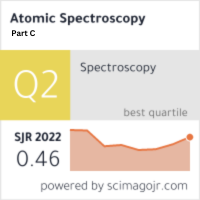Synthesis And Characterization Of Flexible Copper Doped Nickel Oxide-Based Paper Electrode For Perovskite Solar Cell Applications
Keywords:
Spectroscopy, Conductivity, Scanning, Solar Cell, Power etc.Abstract
Perovskite solar cells (PSCs) are engaged in solar cell production as they improve power conversion efficiency. The steadiness and performance of cells are dependent on the hole-transporting materials, one of the vital constituents of the perovskite solar cells The preeminent hole transporting material is the one that holds high hole mobility, durable air, and mechanical stability and ought to have energy levels that reasonably match with the perovskite layer. As hole materials (HTM) for perovskite solar cells, numerous sorts of semiconductor materials can be utilized. In this research work, Nickel Oxide (NiO) is utilized as a hole transporting material (HTM) because of its unrivaled electrical properties, long-term mechanical and air stability, high hole mobility, and high conductivity. To improve the properties of NiO thin films and to increment the power conversion efficiency of perovskite solar cells, Cu was added into it as a dopant. Cu-doped NiO (Cu:NiO) has a high conductivity compared with undoped NiO. Lignocellulose (LC) fiber is reflected as an extremely abundant, eco-friendly, lightweight natural fiber and a biocompatible polymer. In this work Lignocellulose (LC) fiber is utilized as a substrate. X-Ray Diffraction (XRD), Scanning Electron Microscopy (SEM), and Ultraviolet-Visible Spectroscopy (UV-Vi) were completed to portray the integrated material. It was shown that Cu:NiO has improved effectiveness as compared to pure NiO when utilized as HTM in the Perovskite solar cells.



